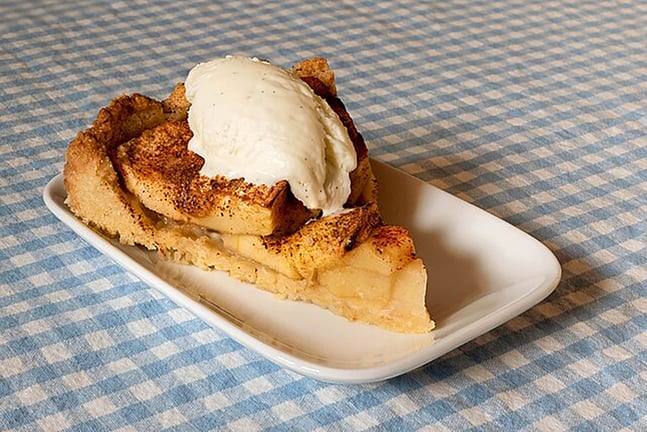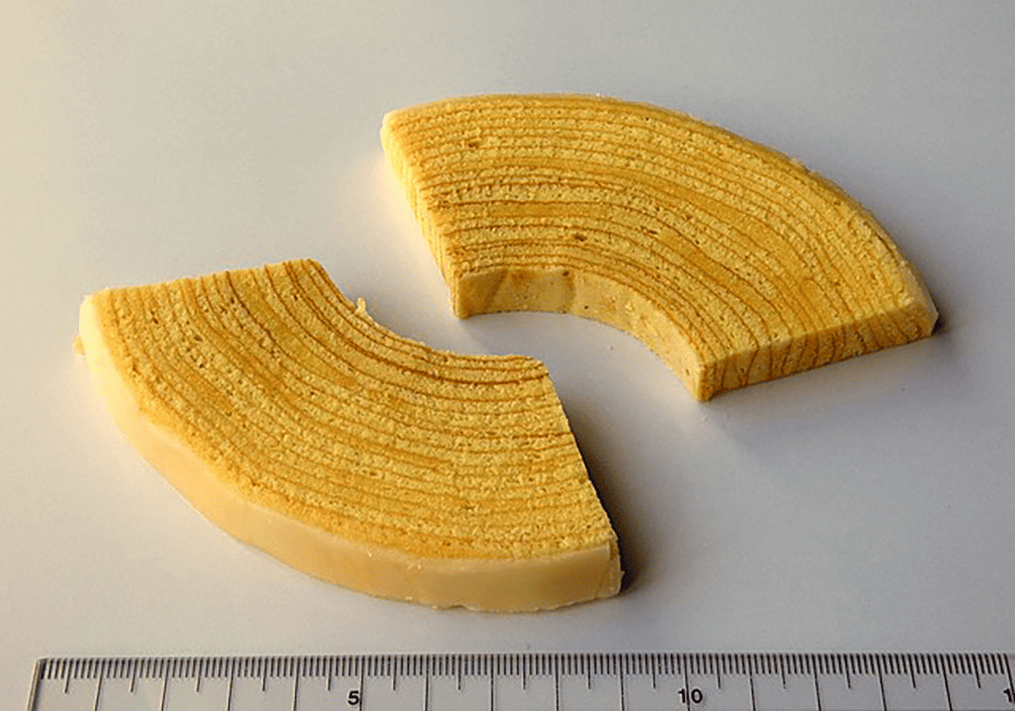- Home
- Articles
- Dessert cakes from Germany, from the Humble Apfelkuchen to the Famous Black Forest Cake
Germany has its share of famous dessert cakes recognised the world over with some of them having quite interesting stories tied to them

Europe was the centre for pastry making and a hub for confectioners from all over the world to come and hone their craft; it still is. Germany also has a share of this fame with dessert cakes from the elaborate and boozy sour cherry-rich Black Forest cake to the more humble apple cake that is perfect with coffee or during cold evenings to warm one's soul.
1. Schwarzwälder Kirschtorte

Also known as the Black Forest Cake, that is only found in Germany, parts of Austria Switzerland and northern Italy. It's because the sour cherries (morello) that go into the cake only grow in these areas and the cake sponges are doused with the liquor made from these cherries called Kirsch or Kirschwasser. This is only restricted to Germany and Switzerland and the cake is said to be inspired by the Black Forest region itself or the local garb of the women who lived in South West Germany. Their hats were said to resemble the Morello cherries. The cake’s ancestor was made in the 1500s when chocolate was still scarce and the modern version only came into existence in 1934 when the cake’s recipe was published in a book written by J.M. Erich Weber.
2. Käsekuchen
The German cheesecake needs no introduction and unlike the American or the Spanish Basque cheesecake, the German cheesecake uses a local curd cheese called quark, which is why it is popularly also known as Quarkkuchen. The German cheesecake is said to be a bit fussier because the crust is made of buttery shortcrust pastry. Quark has more water content, is more acidic and is less creamy. It's mixed with eggs and sometimes fruits and results in a lighter cake with the perfect balance of sweet and sour. It is baked on high for the caramelised sides and a wiggly centre.
3. Donauwelle

Simply put the name translates to Danube waves because when cut into, it resembles the current of the Danube River. It's one of the most famed German desserts that is also loved in Austria and is a kind of sheet cake that uses chocolate, cocoa, sour cherries (morello) and buttercream. Germany also calls this cake Schneewittchenkuchen or the Snow White Cake. The sour cherries go into the cake batter that sinks into the batter as the cake is baked, producing that wave-like pattern in the cake's cross-section. The buttercream goes on top of the cake sponges (vanilla and chocolate) and there's a thick layer of ganache on top. Immigrants who settled in the Donauschwaben region, after the Ottoman Empire took over their lands, were said to have brought this cake with them. The immigrants settled somewhere on the Danube river banks that also connect the Black Forest region and the Dead Sea, its mouth.
4. Agnes Bernauer torte

Named after Agnes Bernauer, the lover of Duke Albert III of Bavaria, it was created in the German city Straubing. The Duke’s father, Duke Ernst was strongly against Bernauer being with his son as he deemed her to be a commoner, unfit to be with his noble son. He accused her of witchcraft and got her drowned in the Danube River. This happened around 1435. Her tragic story also inspired plays namely Friedrich Hebbel’s eponymous tragedy, as well as Carl Orff’s folk musical Die Bernauerin. This Bavarian almond meringue cake is filled with coffee custard-like buttercream between discs of the meringue. It's decorated with chopped almonds and powdered sugar.
5. Baumkuchen

This German cake is unique because it's prepared on a spit, layer by layer, while it turns over an open fire. It's said to be the king of cakes as well as the cake of kings and as the story goes, in 1843, King Friedrich Wilhelm IV of Prussia visited Germany’s Salzwedel town, famed for its Baumkuchen. He had a taste of the cake and liked it so much that he took it back with him to Berlin and from thereon its popularity grew among the aristocrats. 20 years down the line, in 1865, King Wilhem I (German emperor from 1871) visited Salzwedel and had a taste of the Baumkuchen and liked it so much that the baker became the royal supplier of the cake to his royal court. As for the “king of cakes” part, the cake takes time to prepare, a specialised oven and an experienced baker. There are 25 layers that need special care to be just right so that all of it sticks to the stick and doesn't fall off. The German Confectioners’ Guild has Baumkuchen in its logo because of the sheer effort it takes to make it.
6. Apfelkuchen
Apples grow in abundance in Germany so it's no surprise that apple cake is one of the most famous cakes in Germany. Come autumn German homes are filled with the smell of cakes baking in the oven with the aroma of local apples and cinnamon in the air. The cake’s batter is buttery and dense and true to German baking, this cake often has a crisp streusel topping. It might also have vanilla custard in it or use cinnamon sugar as a topping that complements the taste of the apples in the cake.
More Like This
Popular Articles




Trending Web Stories
Curated Recipes

















